Sarah Ophelia Colley
and Friend
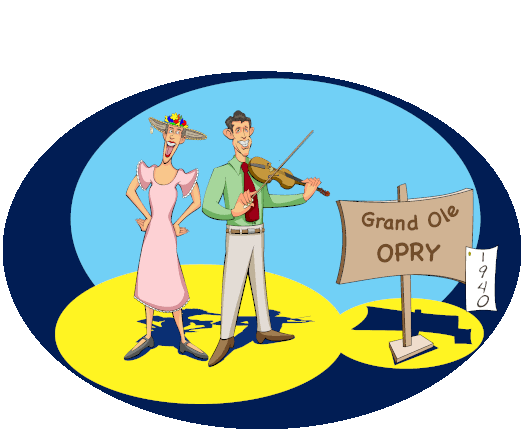
(Click on the image to zoom in.)
| "Judge" George Hays: | Oswald, the folks around here tell me you're making a lot of money these days. Tell me, could you give an absolutely safe way to double my money? | Oswald Veach: | Why, sure, Judge! Just fold it once and pin it in your pocket!" |
| - | Grand Ole Opry, Broadcast, December 12, 1942. |
| "Well, Mr. Bond," Goldfinger gave the rich man's thin smile. "The safest way to double your money is fold it twice and put it in your pocket." | |
| - | Goldfinger, Ian Fleming, 1959. |
The documentation is clear. The Grand Ole Opry anticipated one of the most influential works of literature of the 20th Century by nearly two decades. So it's undisputed which one should be held in the higher intellectual esteem.
And among the biggest stars of the Opry in those early years was Roy Claxton Acuff. Like many country musicians, Roy came from a rural background. However, he was by no means from a downtrodden family. Born in 1903 in Maynardville, Tennessee, his dad was a farmer, yes, but was also the postmaster and pastor of a local Baptist church.
A good student and very good athlete, the decision to not attend college was Roy's as he had thoughts of a baseball career. After high school, he played semi-pro and was invited to try out for the local farm team of the New York Giants. That was the Knoxville Smokies, now the Tennessee Smokies although they now farm out for the Chicago Cubs.
However, during training Roy had difficulties with his health and later ended up passing out during a game. The rather complex series of problems led to what was then called a nervous breakdown, and as part of his recovery program, Roy began practicing the fiddle. Deciding baseball wasn't for him, he honed his musical skills to where in 1932 he was able to join a traveling "medicine show".
About the time Roy was beginning his musical career, young Sarah Colley was graduating from Nashville's Ward Belmont College (now operating as Belmont University). Her folks were actually rather upper crust, and they hoped that the women's college - institutions were still often gender separated in those days - would serve Sarah as a "finishing" school, an institution which was - to cite the dictionary - " a private school for girls that emphasizes cultural studies and prepares students especially for social activities."
But young Sarah was interested in the theater and after she graduated she actually (shudder) got a job working for a theatrical production company. Although motion pictures had been replacing live theater, there were still a number of rural areas where electricity was a luxury and where entertainment was synonymous with live entertainment.
Sarah's work involved quite a bit of travel where she would meet with local groups to promote the company's productions. The usual story is that on one of the trips she met a woman who had a demeanor and manner of speaking that Sarah though might make a good comedic character. She marked the idea down for future reference.
In the meantime, Roy had continued to follow a fairly common progression for a country musician. He and a group of fellow musicians would get together and play at local get-togethers and square dances. Radio stations were also looking for new ways to attract listeners and Roy and his band - dubbed "The Crazy Tennesseans" - began playing on WROL and WNOX in Knoxville. In 1936 Roy's performances brought him a recording contract with the American Record Corporation. The band traveled to Chicago where they cut over 30 sides.
If Roy's contract was typical of the time, he would have gotten a one-time fee for the sessions plus expenses, but it was unlikely he received much in further royalties. Instead the day-to-day money came from live performances and from radio broadcasts. But to get good money from the radio - sometimes small stations paid nothing - you had to hit the big time.
In the mid-1930's there were two nationally broadcast country music programs. There was the WLS Barn Dance from Chicago which was first aired in 1924, only four years after the first commercial radio station began broadcasting. Then there was the Grand Ole Opry which began broadcasting on Nashville's Station WSM a year later.
The earliest performers on the Opry were mostly people with regular jobs, often farming, and they played their own music because that's the only way they could have music. But in the 1930's the Grand Ole Opry with its rise in popularity (and competition from other music programs) began hiring professionals who did nothing but play music for a living.
It would seem that Roy, being from Tennessee and all and now established as a radio performer and recording artist, would be a shoo-in for the Opry. But for some reason the show's host, "the Old Judge" George Hay, wasn't interested in Roy and his Crazy Tennesseans. But after much persuasion, Roy managed to wrangle a guest spot on one broadcast. The listeners' response was favorable enough so that in 1938 and after the band changed their name to the Smokey Mountain Boys, the Old Judge agreed to have Roy on as a regular. Roy was a hit and he soon became the center of the Opry broadcasts with the Smokey Mountain Boys kicking off each show and playing at least one additional song in the half-hour broadcast.
The Smokey Mountain Boys was a bit of a misnomer and like Bo Diddley did for rock and roll, so Roy did for country music. That is, he had no hesitation of having women in his group as instrumentalists on equal parity with the men.

Bo Diddley
Parity for the Ladies.
And indeed, the "Boys", despite the name, included two ladies as full time musicians. One was upright bassist, Velma Williams, who was with Roy from 1942 until 1948. The other Smokey Mountain Lady was the banjo virtuoso, Rachel Veach. Small in stature but large in talent, she also appeared in duets with her bother Oswald (whose stage persona could actually be rather annoying). Rachel played both the old time clawhammer style and that new fangled "up-picking". This was the time when Bill Monroe, now regarded as the father of Bluegrass Music, didn't even have a banjo player.
Roy came to the Opry at a providential time. In 1939, the show had become affiliated with the National Broadcasting Corporation. NBC, run by the rather forceful executive and business magnate David Sarnoff. NBC was the biggest network in the country and the Grand Ole Opry was now a nation wide program.
In a typical show the announcer, David Stone, would come on the air:
How do you do, everybody! From Nashville, Tennessee, Prince Albert the world's most popular smoking tobacco presents another broadcast of the South's most popular radio program - The Grand Ole Opry!
Then the theme song would kick off:
Got my Sunday Shoes, got my hair slicked down!
Having a big time tonight!
A can of good Prince Albert for your pleasure bound!
Having a big time tonight!
Going to the hoedown in my Sunday clothes!
Having a big time tonight!
Going to still be dancing when the rooster crows!
Having a big time tonight!
As you might guess this was the time of the sponsored program where a single company put up all the money for the show's costs. And we have to admit that the sponsors kind of laid it on a bit thick, sticking their name in whenever they could. But the Opry's introduction was quite restrained compared to the Camel News Caravan with John Cameron Swayze where every sentence of the introduction mentioned Camel cigarettes at least once.
The lines about "Sunday shoes", "Sunday clothes", and having one's "hair slicked down" is worth a comment. Originally country musicians would typically perform wearing suits with coat and tie for the men and the ladies decked out in their best Sunday dresses. But when the Opry began touring they knew that the city folks wanted to see, well, there's no other word for it, they wanted to see hillbillies. So the men started donning overalls and work shirts and the ladies put on their gingham gowns.

Uncle Dave Macon
And it was in 1940 that a wider audience got a sample - audio and visual - of the Opry when Hollywood stepped in. The, yes, "hillbilly" comedy group, the Weaver Brothers and Elviry, made another of their surprisingly popular movies (their first film even starred Humphrey Bogart), and the new picture was titled The Grand Ole Opry. But except for featuring Roy and his band as well as Uncle Dave Macon and his son Doris, the rather improbable plot had little to do with the Opry. But Roy with the Smokey Mountain Boys did sing a smooth and tranquil rendering of "Wabash Cannonball", and in a later scene Roy even had a spoken part. He was a Hollywood star and would later appear in other movies.
It was also in 1940 that Sarah, still not well known outside of the regional theaters, happened to appear at a women's club in South Carolina. There she did her first stand-up routine with the character she called Minnie Pearl. Later she performed at a convention for radio executives where not too surprisingly one of the executives had connections with the Grand Ole Opry. He invited "Minnie" to appear on the show.
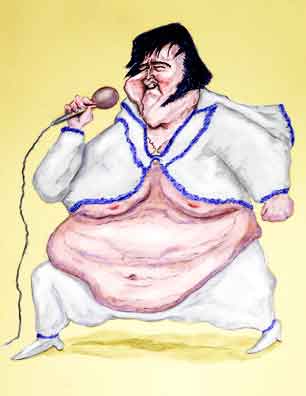
The Young Man from Memphis
Although Minnie did sing in her performances, she was first and foremost a comedian. "Cousin" Minnie was often billed as the Opry's girl reporter where she'd give an update on how things were on the tours. She would direct her jokes at her age (although she was only in her twenties) and the difficulties she had in "snaring" a man. Actually she was married to a charter airline pilot Henry Cannon who not surprisingly found good business ferrying performers around (eventually his clientele eventually included a young man from Memphis). Minnie and Henry remained married for the duration as you might say.
Now for a bit of a secret.
|
Psst! Roy Acuff |
Ha? (To quote Shakespeare.) Did you say Roy Acuff did NOT play Country and Western Music?
Yes. We repeat - and pardon us if we shout:
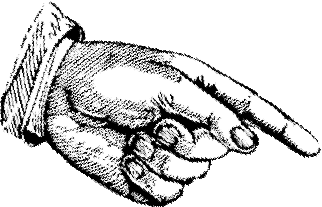 Roy Acuff
Roy Acuff
Did
 NOT Play
NOT Play
 Country
Country
and
Western
Music
No, Roy's music was what is now called - and was then called - old time or old timey music. Some scholars may refer to it as "pre-bluegrass" but the early Opry broadcasts would sometimes refer to their music old as time and with nary a mention of "country".
However, another commonly used expression for the music was hillbilly and beginning in the early-1930's the word was used extensively in the advertisements of the record companies. The term was soon adopted even by the musicians and was the word of choice through the 1940's.
But as the Opry's audience broadened, in their introductions and announcements David and the Old Judge changed their wording. By the 1940's they had largely dropped the old time designation and never spoke of hillbilly music. Instead, the Grand Ole Opry was a folk music program intended for edification of the catholicity of visitors who came to Nashville to see the show live and for the radio audience who ranged from New England to the Western states.
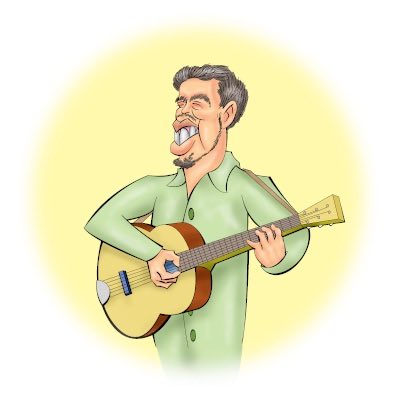
Alan Lomax
Why the change? Well, "hillbilly" always had negative connotations or at least it was never a particularly positive word. But in the late 1930's there had arisen an independent musical movement where the same songs heard on the Opry were played. But instead of originating from the hills and hollers the new enthusiasts were the urban intellegensia of the East Coast cities. Later scholars dubbed this most unusual phenomenon as the Folk Music Revival.
Much of the organization of the Folk Revival was from the efforts of the folklorist Alan Lomax. Alan promoted the songs of singers like Huddie Ledbetter (better known by his sobriquet of Leadbelly), Burl Ives, Sonny Terry, Brownie McGee, and the first "urban" folk song group, the Almanac Singers who featured a young Woody Guthrie and a very young Pete Seeger. The New York networks began sponsoring folk music specials such as "Back Where I Come From" which was specifically written to showcase Woody's original song "So Long It's Been Good to Know You".
Radio stations began broadcasting regular folk music programs. Woody even briefly - very briefly - had his own radio program which like the Grand Ole Opry was sponsored by a tobacco company. In Pipe Smoking Time Woody also plugged the product in what we must admit was not one of his most memorable songs:
Howdy, friend, well, it's sure good to know you!
Howdy, friend, well, it's sure good to know you!
Load up your pipe and take your life easy,
With Model Tobacco to light up your way!
We're glad to be with you today!
By the early 40's folk music had a strong positive and even patriotic connotation. City folks and rural folks were playing and actually enjoying the same music. Yes, the future looked bright for everyone.
Unfortunately, any hope that the happy state of affairs could continue was goobered up by what goobers up so much today - politics. There's no need to go into detail but folk music began to be thought of as the music of the young and liberal and urban and was eschewed by the older, conservative, and rural. So as the 1940's moved onward, the Opry's host, announcer, and singer, Red Foley, (who had replaced the Old Judge) no longer mentioned folk music at all. So what was the music you heard on the Opry?
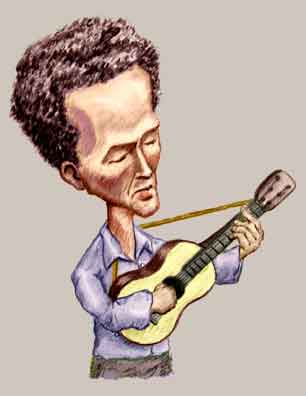
Woody ...

... Pete ...
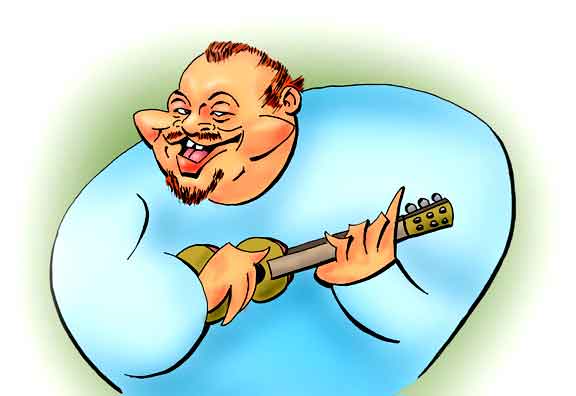
... Burl ...
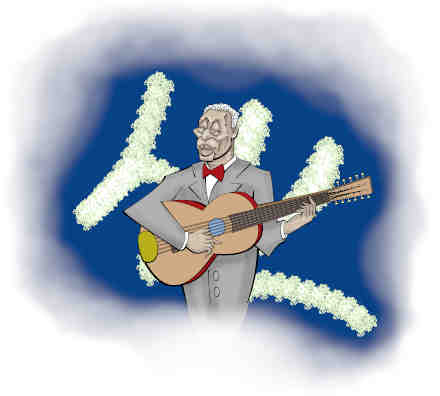
... and Huddie.
The record producers had continued to use the hillbilly designation. But for some reason, Billboard Magazine perhaps because of the negative and even derogatory connotation of the word, continued to put everything - even the songs of Eddy Arnold (who was extremely popular), Gene Autry (popular with the kids, too), and Bob Wills (with his swinging Texas Playboys) - into the folk music bin. So when Hank Williams's "Lovesick Blues" reached #2 on June 18, 1949, on Billboard's chart it was a folk song.
But the next week - on July 26, 1949, to be exact - "Lovesick Blues" reached the top spot and Billboard retitled the list. No, the song wasn't "hillbilly" and was still in the folk genre. But "Lovesick Blues" was now listed in the new parenthetical sub-genre called Country and Western. Although the word "hillbilly" as a musical term never completely vanished, Country and Western soon became the norm.
The year 1949 not only marked when Hank's song hit #1 and transformed "hillbilly" music into Country and Western, but it was also the year that he first appeared on the Grand Ole Opry. Long and tall, and decked out in a "Nudie" suit with cowboy hat and boots, Hank was called back for encores six times.
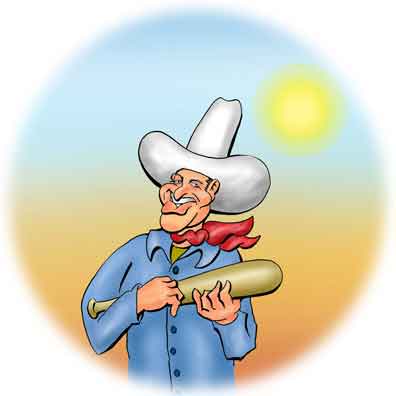
Gene Autry
Popular with the Kids

Hank Williams
Folk Music
Old time music as played by Roy, Grandpa Jones, and Stringbean Akeman was not completely gone, of course, but you also had classic baritone Ford Rush singing pop standards like "Memories" and even a swing version of "The Red Red Robbing Come Bob Bob Bobbin' Along". Then there would be Pewee King and the Golden West Cowboys singing "Take Me Back to Tulsa" with instrumentation that included - yes - the accordion. And there was Curley Williams and his Pea Pickers would perform "Home in San Antone" and Hank Thompson singing "Humpty Dumpty Heart".
So as the 40's moved on Country began to make room for Western. More and more men began sporting pompadours and string ties1. Women displayed their best bouffant blowouts ("The higher the hair, the closer to God"). More and more men (and some ladies) were wearing the ornate Nudie suits.
Electric guitars with their distinctive twang began pushing out the acoustic instruments, and songs began to adopt a swing and sophistication with the likes of Ernest Tubb (who had a rather synthetic friendly on-stage feud with Red). The electric pedal steel guitar became almost de rigueur, and the singing became mellow as the crooners stepped up and gospel music became the estate of close harmony groups. The old timey songs were now being played in up-tempo styles by Bill Monroe and the Bluegrass Boys and later by Lester Flatt and Earl Scruggs with their Foggy Mountain Boys. By 1949, the music of the Opry would have been unrecognizable to the early musicians. In fact, it began sounding a lot like (gasp!) rock and roll.
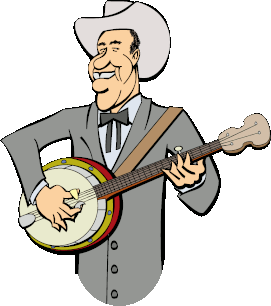
Earl Scruggs
Bluegrass
Throughout it all Roy remained a member of the Grand Old Opry. But beginning in the mid-1940's he was cutting back his appearances and sometimes wasn't even featured on a show. More and more of his time was devoted to his (quite successful) music publishing business founded with Fred Rose.
Of course, there was still the comedy, and Minnie had become firmly established as an Opry regular. She would come out on stage and do a stand-up routine. In her earlier appearances she would wind up with a song, usually with humorous embellishments, but she later stuck with her monologues.
Then as the 1950's crept in a funny thing happened on the way to the 1960's. That was television. And - this is still a surprise - the Opry really didn't do that well on the tube.
Instead starting in the mid-1950's, the #1 country music television program was the Ozark Jubilee which was broadcast by ABC from Springfield, Missouri and hosted by Red Foley - yes, Red had bowed out of the Grand Ole Opry and moved to Missouri.
Unlike the Opry, the Jubilee's programming strategy was to bring in a large number of guest artists which appeared only a few times. Yes, Roy did appear on Jubilee but only once. This is contrasted with Porter Wagoner - unmistakably Country and Western - who was on five times. Minnie herself appeared on several Jubilee shows from 1957 through 1960 when the show ended.
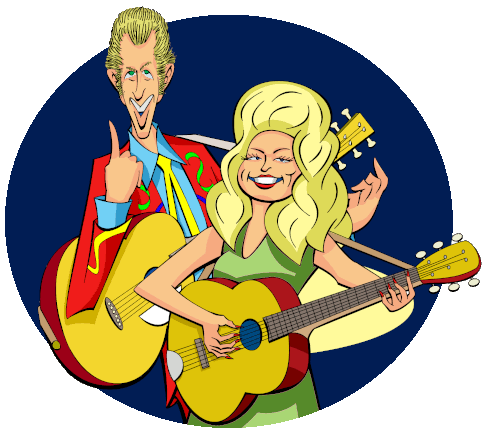
Porter Wagoner and Friend
Minnie with her expressive face, flower bedecked hat with the dangling $1.98 price tag, and piercing "How-DEE!" was perfect for the new medium. She soon began appearing on national prime time shows: Dinah Shore, Tennessee Ernie Ford, and even The Tonight Show then hosted by Jack Paar. As the 60's rolled on Minnie was a guest on the Steve Lawrence Show, Jimmy Dean,Pat Boone, The Carol Burnett Show, Jonathan Winters, Dean Martin, The Liberace Show, Joey Bishop, The Hollywood Palace, and Philbin's (yes, Regis) People.
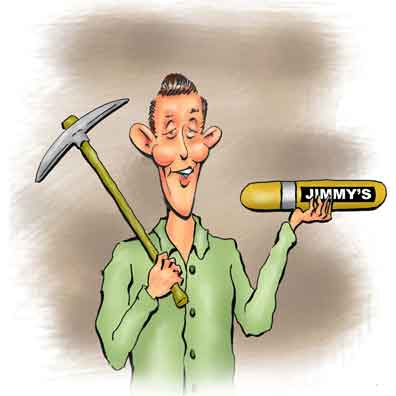
Jimmy Dean ...
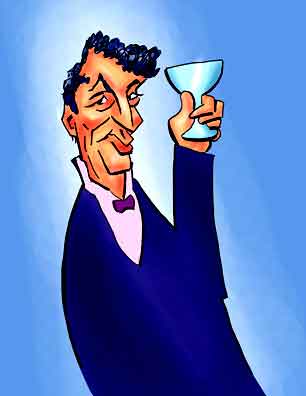
... Dean Martin ...

... Joey Bishop ...

... and Jack Paar
Then as the decade was closing out, came the unexpected hit television program Hee-Haw hosted by Roy Clark and Buck Owens. Although initially panned by the critics as an unsuccessful "hillbilly" imitation of the popular "hippie" comedy show Rowan and Martin's Laugh-In, it became so popular that when the network tried to cancel the show after two seasons, the producers immediately took it into syndication. The show continued for almost thirty years and was watched by rural and city folks alike.
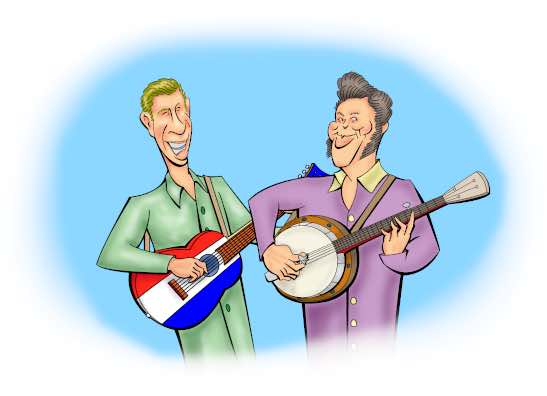
Buck Owens and Roy Clark
Hee Haw!
As partly music but mostly comedy, Hee Haw was natural for Minnie. She was in almost 200 episodes with her last appearance in 1991. Naturally she continued as a guest on other programs including The Bob Hope Show, The Kraft Music Hall, The Dick Cavett Show, The Ed Sullivan Show, The Johnny Cash Show, The Glen Campbell Goodtime Hour, The Lawrence Welk Show, Burt Reynolds' Late Show, The Mike Douglas Show, Donny and Marie, The Porter Wagoner Show, Captain Kangaroo (!), The Merv Griffin Show, The Match Game, The Hollywood Squares, and The Tonight Show Starring Johnny Carson

... and even Johnny
Minnie didn't let her theater training lay fallow. She was a semi-regular on The Love Boat where she played Aunt Effie. And although she wasn't in the 1940's movie Grand Ole Opry, she did appear in other pictures including Coal Miner's Daughter where she played herself and in The Tennessee Beat where she plays a lady preacher.
Roy also had some television spots on the Jimmy Dean Show, Mike Douglas, and Merv Griffin. But as the Swinging Sixties made way for the Self-Satisfied Seventies, Roy was almost unknown to the Baby Boomers whose relatively deep pockets were making the recording industry practically the controlling interest of the national economy. It was rock and roll, not country, that was king.
But then in 1972, the rather unclassifiable pop group The Nitty Gritty Dirt Band whose Mr. Bojangles had been a surprise hit on the rock charts, issued a new album Will the Circle Be Unbroken. Against all wisdom this was an album directed toward the young rock and roll crowd and yet would feature some of the big name - and older - old time, traditional, and bluegrass players including Maybelle Carter, Earl Scruggs, Merle Travis, Doc Watson, Vassar Clements, and, yes, Roy Acuff.
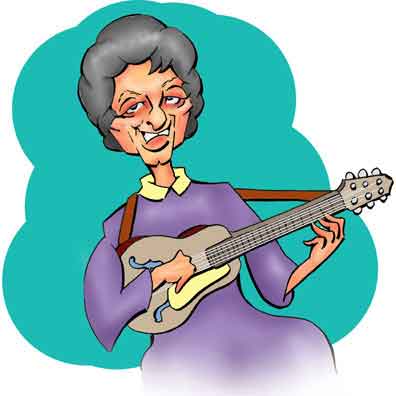
Maybelle Carter
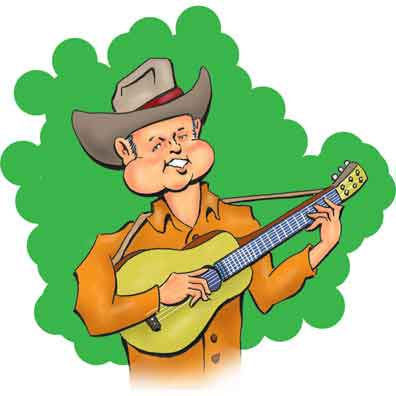
Merle Travis
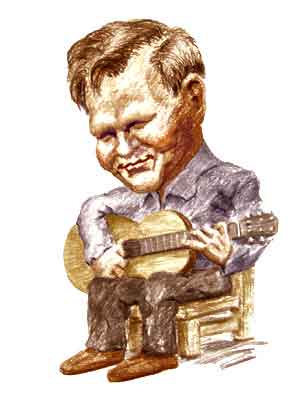
Doc Watson
And it worked. The album was a hit and suddenly a lot of kids knew who Roy Acuff was. In fact, one of Roy's songs on the album, the Hank Williams composition "I Saw the Light", was nominated for a Grammy Award. The next year Roy began appearing regularly on Hee Haw, was dubbed the King of Country Music, and was hailed once more as the face of the Grand Ole Opry. In 1986 he picked up a Grammy Lifetime Achievement Award (1986) and a Kennedy Center Award in 1991. But if what Minnie said is to be taken at face value, even if he had needed a re-introduction to the younger generation, he had been doing all right all along. As Minnie put it:
Roy Acuff was the first country music star to buy a home in a fashionable section of Nashville. The real estate man said, "Mr. Acuff, how do you plan to take care of this?" since the house was very expensive at the time. Roy said, "Would cash be all right?"